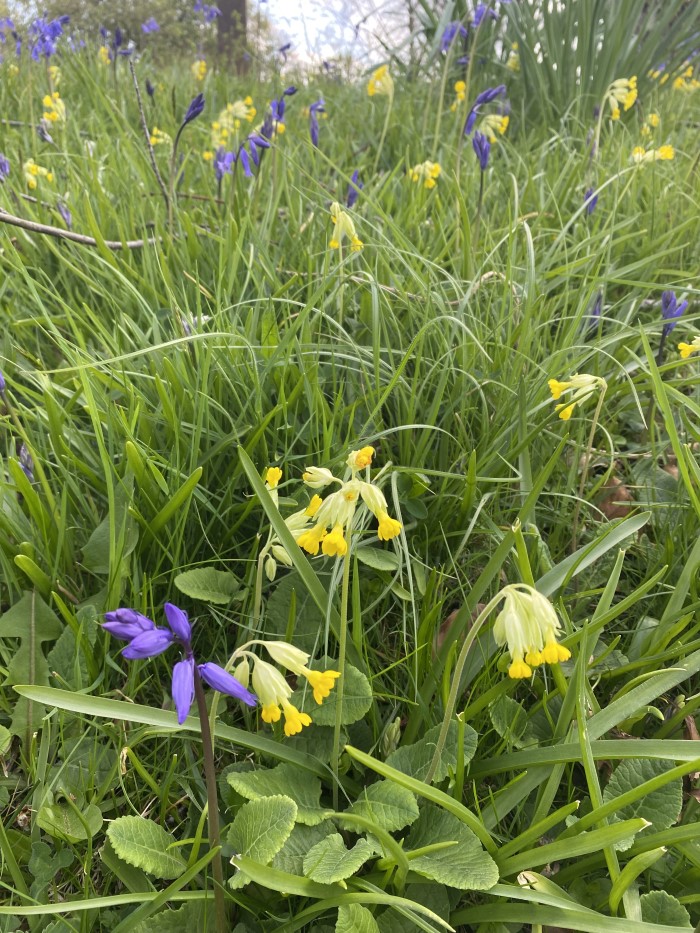Organic Weed Control: Why and How?
Weed is a word with a strongly negative meaning – traditional farmers and gardeners know how much harm weeds do to cultivated crops. But in organic farming and gardening there exists an alternative view of weeds. Without denying the need to control them, organic growers believe that their complete elimination is both impossible and undesirable. Why is this so? Here I try to explain this and focus on useful, rather than harmful, qualities of weeds, and methods of weed control, rather than elimination, used in organic gardening.
What are weeds?
Weeds are representatives of the local flora that have evolved to live on cultivated soils. For various reasons they were deemed unsuitable to be used as food. In some cases early farmers made a mistake and wrongly rejected plants that later became important agricultural crops. The best known example of this is rye, that for a long time was considered, and is still considered in some countries, a weed that accompanies the cultivation of wheat.
Weeds are a result of human selection
Weeds were created by humans in the same way as cultivated crops. Throughout the history of farming the fight against weeds has been an important task. But in the course of this fight, that went on for thousands of years, humans unintentionally selected wild plants for survival. The result of this are hundreds of weeds that are perfectly adapted to live on cultivated soils and can successfully resists all measures used to control them. They are highly specialized plants, whose needs coincide exactly with those of food crops, but they exceed food crops in vigour. Unlike crops, they were naturally selected for only one advantage: successful survival.
Weeds like loose, well cultivated and fertile soils. Their most important requirement is the lack of competition from other plants. Many years of their evolution made it impossible for them to compete in established communities, such as meadows and woods. Many weeds therefore are not found in natural habitats. Such species as fat-hen (Chenopodium album), wintercress (Barbarea vulgaris), or chamomile (Matricaria chamomilla) quickly take over disturbed soil and flourish on it for two or three years, but are then suppressed and replaced by other species that are better adapted to life in established communities.
How do weeds spread?
Their seeds are brought by animals and wind. The roots and seeds of weeds are also contained in the soil where they can be preserved dormant for a long time. When the soil is dug, the seeds and root fragments come to the surface where conditions are right for their growth.
Why are they so successful?
The main survival strategy of weeds is extremely high fertility. Each plant produces tens of thousands of seeds. Thus, a single fat-hen plant grows 100,000 seeds and this is by far not a record. For comparison, one plant of rye produces between 120 and 200 seeds. Weeds also develop, on the same plant, seeds that have different qualities: those that germinate quickly, as well as those that can be preserved in the soil for several years.
Roots of perennial weeds have buds that are normally dormant, but start to develop as soon as the root is damaged, for example, when it is cut during cultivation. For this to happen, the root needs to contain nutrients that can ensure the growth of shoots before they develop leaves and can feed themselves. One has to admit that nature came up with some highly effective strategies to ensure the survival of weeds!

Can weeds be defeated with herbicides?
Herbicides are a new weapon in the fight against weeds that became available in the last few decades. There is, however, a powerful trap that nature created for ambitious scientists attempting chemical warfare against plants. This trap is resistance. Resistance is a result of genetic diversity of plants that exists even within the same species.
Among numerous weeds growing on the same field there are always individuals that are immune to any given chemical. They survive a herbicide attack, produce seeds and then progeny that is resistant to a chemical. And considering how productive most weeds are, after 3 or 4 years a new resistant species colonizes the field and a herbicide becomes useless.
Chemists constantly create new herbicides to win this race, but this takes effort and time. Much of it is spend on determining whether a new chemical is safe for humans. As numerous examples have shown, however, companies often cut corners and make their products available too soon. The toxicity of such products is often discovered later, after several years of wide use, when irreparable damage has been done to people and animals.
Yet another miserable effect of the use of herbicides is that they increasingly contaminate commercially available compost, that we use to grow vegetables and flowers. Many gardeners report that shop-bought compost, even from reputable suppliers, even labelled ‘organic’, can produce distorted, week plants with tell-tale signs of herbicide damage. It has certainly happened to me. This is becoming even more common as companies are forced to abandon environmentally damaging practice of using peat, and replace it with green waste from gardens, fields and municipal parks.
***Read more about the problems of chemical weed and pest control: Growing Your Own Food: Why Organic is better?
Competition or collaboration?
In nature it is extremely uncommon for any land to be inhabited by a single species. Much more usual are communities that include a wide variety of plants. There must be important reasons why this is so. We tend to think of plants living in the same environment as competing with one another. And they certainly do, but there is also friendship and mutual support. Competition happens more actively at initial stages in the development of a plant community. As it stabilizes, collaboration prevails.
Biologists believe that plants growing together feed as a group. Those with deeper roots extract nutrients from deep in the soil and secrete them from their roots, so that they become available to plants with shallow roots systems. Beans fix nitrogen and make it available to other plants that in turn also share what they can access best.
Research has shown that exchange of nutrients is 3-5 times higher between plants of different species, than between those of the same species. There are clearly advantages to life in a diverse community where all individuals have their role and value.
There is currently a lot of research into mycorrhizas, fungi that live on the roots of plants and help them exchange nutrients and water. Fungi form extensions to roots and connect the roots of different plants, spreading long distances in the soil. This underground network allows plants to receive and exchange their food. As a result plants grow better and live longer.
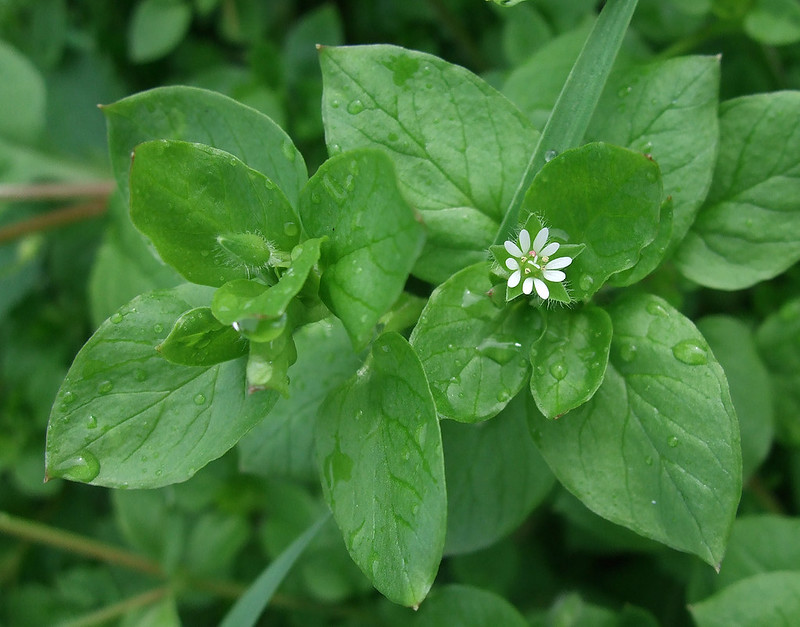
Miserable monoculture
Humans, however, do exactly what nature carefully avoids – use monoculture in the cultivation of their food. In such a sterile environment vegetables have to survive without important support of other species. Considering the cost, including the cost to human health, of achieving monoculture, is it really worth the effort?
Can food crops compete with weeds?
Of course, weeds should not be given free rein, for they can easily outcompete cultivated plants. It’s been demonstrated that weeds requiring a lot of nitrogen, such as chickweed (Stellaria media), absorb it 10-15% more effectively than wheat. Weeds often have deeper roots, and can grow at lower temperatures, and therefore earlier, than cultivated plants. Many can also effectively suppress the growth of other plants through releasing toxic chemicals from their roots. All plants have this competitive ability, known as allelopathy. Many weeds, however, unlike many cultivated plants, are known for high levels of allelopathic activity. Among the champions are rye grass (Lolium temulentum), creeping thistle (Cirsium arvense) and sow thistle (Sonchus arvensis).
There is no need to panic, however, for cultivated plants have their own defences. Mycorrhizal fungi, mentioned above, that live on the roots of plants, differ from species to species, and also take part in the competition. Research has shown that fungi, that co-exist with cultivated plants, suppress the growth of their competitors, including weeds. But this effect can be observed only on healthy soils, where mycorrhizas have not been destroyed through the use of herbicides and fertilizers.
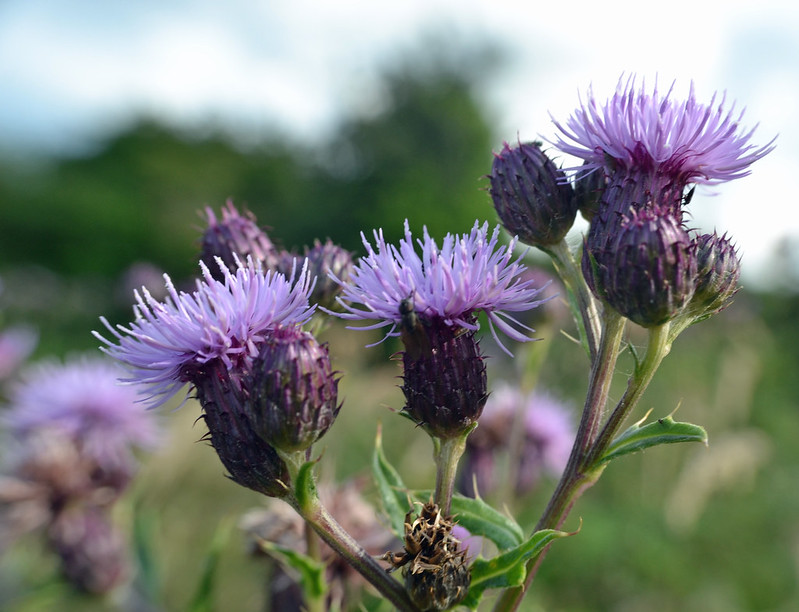
The benefits of weeds
Research and observation have shown that weeds can be useful companions to plants. An authority on biodynamic agriculture, Ehrenfried E. Pfeiffer claims in Weeds and What They Tell Us (3rd edition, 2012) that chamomile in proportion 1:100 stimulates the growth of wheat, and in proportion 10:100 suppresses it. Cornflower has the same effect on rye.
Joseph A. Cocannouer in popular Weeds – Guardian of the Soil (2015) explains that many weeds have deep roots, extract nutrients form deep layers of soil and bring them to the surface where they become accessible to cultivated plants. They also loosen the soil making it more transparent to air and water. He calls such weeds ‘deep divers’. He points out that if they grow sparsely, they develop good root systems and perform their beneficial functions most effectively. He advises farmers to have pigweed (wild Amaranth) plants growing among potato plants every 30-90 cm. He claims that this increases both productivity and quality of potatoes, particularly their ability to survive winter storage. He advises the same to growers of peppers and aubergines.
Plants appear to have preferences for their companions. Roses and pumpkins do not combine well with grasses, but grow well with dicotyledon plants, including chickweed, shepherd’s purse and fat-hen.
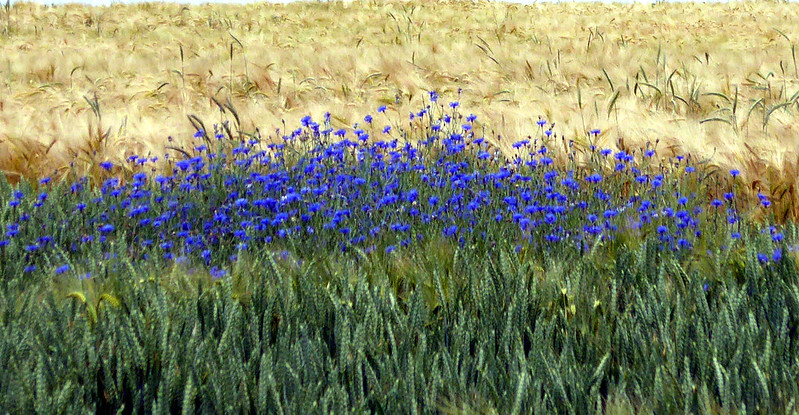
Organic weed control
Because of all the problems of the warfare against weeds and the advantages they can offer, modern approach is not to try to eliminate them completely, but to control them. This means keeping their number below a certain limit, in which they do not seriously affect the productivity of cultivated plants. Some methods are described below.
1. Spring provocation
In spring, as soon as the soil dries, it is loosened with a hoe to the depth of 5cm to provoke the growth of weeds. A week later hoeing is repeated to destroy any seedlings that have appeared. If time allows, this is done a third time after another week. At this point some growers loosen the soil to the depth of 20 cm without turning it, so as not to bring new weed seeds to the surface. After this crops can be sown.
Later in the season some weeding with a hoe may be needed, since new weed seeds can be brought by animals and wind. By then, however, the crops will be established and able to outcompete any newcomers. Weeds will therefore be reduced to a useful role of companion plants and groundcover protecting the soil from drying.
2. Controlling perennial weeds
To successfully control perennial weeds it is important to understand their biology. Their roots have a maximum concentration of nutrients in autumn. These are used to produce new shoots in spring. The concentration of nutrients in the roots falls to a minimum just before flowering, when flower buds are fully developed. This is the best time to cut the weeds down. Because the roots are exhausted, the growth of new shoots will be minimal. Timing is therefore very important: if the stems are cut too early, new vigorous shoots will be quickly produced.
If the shoots are cut down or mowed second time, the roots will be weakened further, and next year the area will be nearly clean from perennial weeds. This method may be more effective than digging because, as mentioned already, injuring roots stimulates dormant buds with which the roots are covered. Small fragments of roots, if preserved in the soil, will quickly produce new plants. Any digging may also bring weed seeds, always plentiful in the soil, to the surface.
3. Green manure
One of the functions of green manure is to suppress weeds. This technique is often used in autumn. Cold-tolerant, fast growing plants, such as buckwheat or phacelia, are sown densely, after crops have been harvested. In spring they are integrated into the soil 3 or 4 weeks before planting.
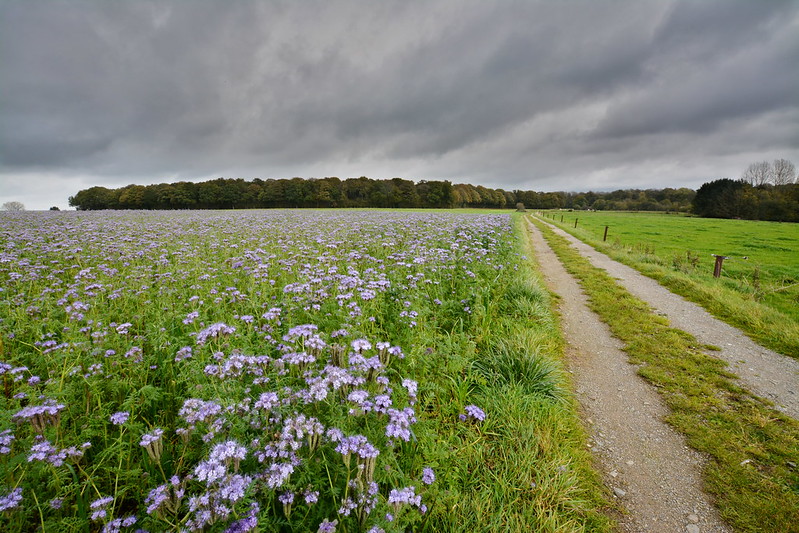
4. Mulch
Organic mulch improves soil, preserves water and is effective at suppressing weeds. This is because most seeds require access to air to grow, and so need to be no deeper than 0.5-5cm from the surface of the soil.
Mulch deprives them from air and light, and prevents them from growing. Many materials can be used as mulch, including bark, pine needles, weeds, and compost, as long as they are laid at least 10cm thick. Agricultural fabric, often used when planting strawberries, has a similar role.
5. Ground cover plants
These are often used in decorative gardens. There are numerous choices, including some, such as ajuga and vinca, that are both shade and drought tolerant. Ground cover plants tend to be perennial, often invasive and fast growing species. Their spread needs to be controlled: this is often stopped by using borders, dug in a least 20cm deep.
Fighting weeds with your fork
When considering the benefits of weeds, we should not forget that many are nutritious, delicious and effortless food.
Can’t we eat our way out of the weed problem? Here is more information for those willing to try them as vegetables:
10 Edible Wild Greens for Autumn and Winter
Chickweed: A Weed or a Delicious Salad Crop?
Dandelion: a Beautiful and Useful Gift of Nature
Image credits: fat-hen (Chenopodium album) by Harry Rose; flowering chickweed by Simon; creeping thistle (Cirsium arvense) by Conall; cornflowers in a field by Erich Ferdinand; field planted with phacelia by Gilles San Martin.
Posts related to ‘Organic Weed Control: Why and How?’
10 Ideas for a Natural Organic Garden
Organic Pest Control: Sanctuaries for Beneficial Insects
Organic garden: how to get rid of slugs without chemicals?
Companion Planting for Vegetables in an Organic Garden
Pin ‘Organic Weed Control: Why and How?’ for later

